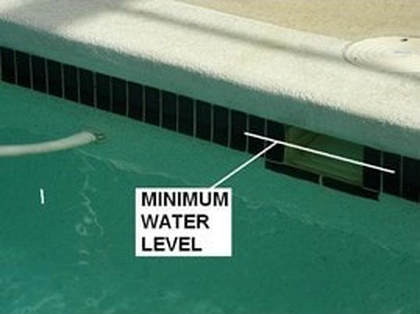 This is the most common question homeowners ask me, and it’s the most basic one. Weather someone is new to being a pool owner or a veteran pool owner, I’m often asked. Where should I keep the water level. For pool owners that have an automatic pool water leveler this is a set it and forget it situation baring any problems with your automatic leveling system which should be checked monthly by your pool service. Often we find the older auto fill systems have worn or broken parts and the float needs replaced the more recent ones are more durable and sustainable. Ideally for best results you want your pool water level 1/3 to ½ way up the skimmer throat. This is the opening in your tile where the surface debris is skimmed or sucked off the surface. Water level too high and the water flow is slowed down to the point that debris can pass right by the skimmer opening without being sucked inside and filtered.
Too low of a water level and the pump will lose its prime and you are risking possible damage to your pool pump from overheating and running dry, a very costly repair. You also will experience unhealthy swimming conditions from lack of circulation and filtration. If you have a salt chlorination system your salt cell will only produce chlorine with consistent flow high enough to trigger the flow switch. All of which will lead to an algae bloom. If you are unsure where to keep your pool water level, please don’t hesitate to ask your pool service or a pool professional. 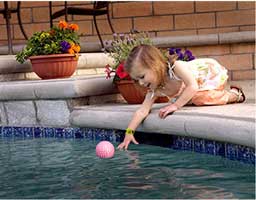 Drowning is to blame for nearly 30% of children’s deaths, drowning in a private pool is the second leading cause of death among teenagers. For the years 2014 through 2017, there were an average of 3,500 fatal unintentional drownings. An annual average of 6,200 children younger than 15 years of age were treated in U.S. hospital emergency departments for nonfatal injuries associated with pool or spa submersions. The majority of these incidents involve children younger than age 5. On average, more than 4,000 children under the age of 5 annually require emergency department treatment for pool and spa related non-fatal injuries. The majority of these children are between the ages of 1 and 3.  Although these statistics alone are frightening, they aren’t the only reasons why you should consider developing home swimming pool safety tips and rules for your family. For every drowning that occurs, there are 11 near drowning incidents, many of which result in disabling brain damage due to lack of oxygen supply to the brain. With all these statistics to consider, here is the most glaring of them all: roughly 70% of drowning incidents occurred when children were not adequately supervised. In other words, supervision is the best idea to protect your children from an accident around your pool. However, supervision isn’t 100% foolproof, and we all know mistakes and errors in judgment happen.
Pledge that you will... * Don't leave - even for a minute! Children can drown very easily and very quickly. Even if you leave for just a moment to answer the phone, or check the oven timer it can provide enough time for a traumatic accident to occur. If you must go inside, insist that all children get out and stay out of the water until you return. * Inform babysitters and nannies If you have a babysitter, or nanny watching your children, make sure they are aware of your safety measures regarding your pool and spa. Show them how to open, and close the gate around your pool and spa, how to manage your pool and spa cover if you have one, and make sure your babysitter or nanny is trained in CPR and first aid in the event of a pool accident. * Talk to your children Children, no matter how young should be aware of the dangers of a swimming pool and spa. Often the fear of an accident is enough to keep most children cautious. Explain that no running should ever take place around the swimming pool, no one should enter the water without an adult present, and to NEVER lean over the edge of the swimming pool to try and retrieve an item from the water. * Appoint a designated " watcher " during parties When adults have parties, often children also attend. A distracted adult can allow accidents to happen. Rather than risk it, have adults take turns keeping a careful watch on the swimming pool. If there are more than 6 or 7 children in the water, it is recommended to have two adults watch the pool at all times. * Keep a telephone & safety equipment near the swimming pool Unfortunately accidents can happen. Be Prepared. In case of an emergency, keep a telephone near the pool so you can quickly call 911. Every second counts. If a child appears to be in trouble, get that child and all other children out of the water immediately before calling 911. * Check the pool FIRST. If you notice one of your children missing, go check the pool first. Drowning can occur within minutes. Time is valuable. Go all the way to the edge of the swimming pool and scan the entire length of your pool including along all of the borders of your swimming pool and be sure to check your spa if you have one. * Never use a flotation device as a substitute for supervision * Knowing how to swim, does not make someone drown proof. * Never use a pool or spa with a missing or broken drain cover * Have a licensed swimming pool professional regularly inspect your pool and equipment * Clearly mark the location of the electrical cut-off switches to your swimming pool and spa pump * Place tables and chairs well away from your swimming pool fence to prevent children from climbing over * Make sure all suction outlets have approved covers to prevent entrapment * If someone becomes entrapped against a drain, cut-off the power to the pump immediately, do not attempt to pull them free from the powerful suction 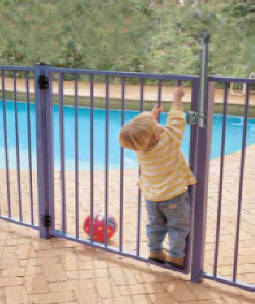 * Remove ALL pool toys from the pool after use. Children will be tempted to reach over the edge of the swimming pool for toys away from your presence( plus they will get sucked into your pool skimmer and can restrict the flow of your filter and pools circulation system) * Practice TOUCH SUPERVISION with all children under 6 years old. This means at all times your children are within arms reach of you * Learn CPR Animal / Pet Safety Equipment These are inexpensive pieces of equipment to keep all animals safe around your pool. These devices won’t tell you when an animal is in the pool, but it will help them get out on its own.
Popular Model: The Poolguard PGRM -2 and the new Coral Drowing Prevention systems Manta http://coraldrowningdetection.com/about/
What are Phosphates? Phosphates are chemical compounds that contain phosphorus. In addition to phosphorus, phosphates contain oxygen and sometimes hydrogen. Phosphates are a biological building block that is constantly being introduced to your pool water and nourishing algae. Phosphorus is a primary food source for aquatic plants including all types of algae. Phosphate compounds are broken down into their simplest form, orthophosphates, in one of the following three ways: Oxidation (converting compounds into oxides) Hydrolysis (decomposition by water, and Enzymatic digestion. Regardless of how it happens, if phosphates are allowed to remain present in pool or spa water they will be reduced to orthophosphates, which are the only form of phosphates that algae can digest. Orthophosphate levels should remain below 100-125 ppb (parts per billion). Once levels exceed 200 ppb, algae becomes increasingly resistant to sanitizers, including chlorine shock. Excessive levels of orthophosphate, such as 1,000 ppb or more, should be brought under control with a phosphate remover such as Natural Chemistry Phos-free or Bio-dex Phosphate remover plus. Phosphates are the most overlooked chemical test performed on a pool. Most 5 and 7 point dip test strips do not test for phosphate. Many pool owners don’t know about phosphates until it’s too late. Phosphate levels should be measured at least once a month. Sources of Phosphates The largest source of phosphates entering your pool come from the public water systems. Municipal water treatment plants commonly add phosphates to the drinking water as a corrosion inhibitor to prevent the leaching of lead and copper from pipes and fixtures. Inorganic phosphates (e.g., phosphoric acid, zinc phosphate, and sodium phosphate) are added to the water to create orthophosphate, which forms a protective coating of insoluble mineral scale on the inside of service lines and household plumbing. The coating serves as a liner that keeps corrosion elements in water from dissolving some of the metal in the drinking water. As a result, lead and copper levels in the water will remain low. The key to ensuring that orthophosphate reduces lead and copper levels, is for Public water systems to maintain proper orthophosphate levels. The health effects of drinking water with phosphates are not known. The Food and Drug Administration (FDA) has issued a report on the toxicology of inorganic phosphates as food ingredients. The FDA considers phosphates as a food additive to be "generally recognized as safe." The challenge with phosphates is that they are constantly being introduced into your swimming pool water. They are found in lawn and garden fertilizers, decaying vegetation, municipal water, cosmetic items on bathers, and even other pool chemicals. This means a fresh batch of phosphates enter your water when any of the following occur:
How to determine if you have a high phosphate level Use phosphate specific test strips. These strips are highly accurate and measure orthophosphate levels in 10 seconds. They have the widest testing range available on the market, at 0 – 6,000 ppb. (parts per billion). Water tests should be conducted weekly during peak swimming season and monthly during the off-season. The best part – this test kit only costs about $15.00 which is money you will save on shock and excess sanitizers to clear up algae blooms caused by high phosphate levels. 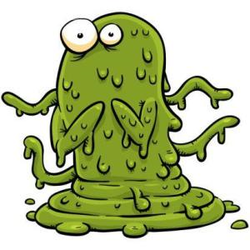 Why are phosphates bad Sixty percent of pool owners experience two full algae blooms every season. So, what causes these blooms and how can we prevent them. Phosphates are algae food they are needed to complete the photosynthesis process and promote algae blooms, once algae starts to bloom the available chlorine in your pool is consumed at an alarming rate as it tries to fight the algae. With no available chlorine to sanitize your pool it becomes helpless and starts to turn green and turbid specially in the warm summer months, Algae loves to thrive in warm dark waters. Phosphates plus low chlorine equals disaster. 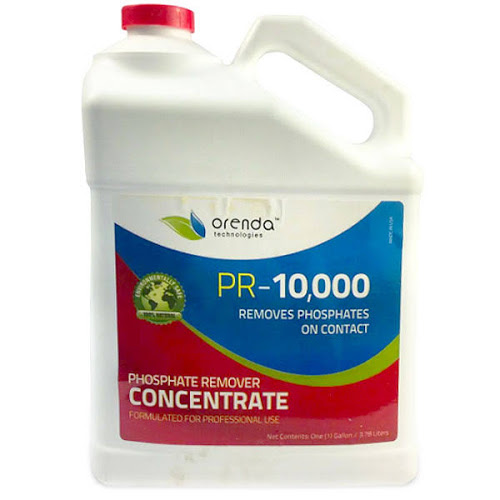 How do you get rid of Phosphates There is no amount of chlorine that will kill phosphates. Special chemicals are needed to trap and reduce the level of the phosphates from swimming pool water. Phosphates can never be completely removed, but can be managed at a low level. This process typically takes two service visits to complete in full. Our first visit we brush down all walls and remove all debris from the baskets. We need to insure that there is proper flow with your equipment in order for the treatment to work correctly. If your filter is in need of cleaning we will recommend doing this before we start the treatment. We then add our chemicals to the water of your pool. The amount of chemicals that we use is determined by the amount of water the pool carries. These chemicals need to circulate in your system for the next 24 hours. Pool Phosphate Removal Tips:
How to prevent Phosphates from building up to a dangerous level
It is important to remember that phosphate removal is a preventative measure, if you have active algae present in the pool, treat it with chlorine shock and algaecide first, then follow up with a phosphate remover to prevent reoccurrence. As algae die, they release phosphates in to the water, making it more likely that algae will return, creating a vicious cycle of expensive to treat algae bloom after algae bloom.
|
AuthorWrite something about yourself. No need to be fancy, just an overview. Archives
August 2018
Categories
All
|
